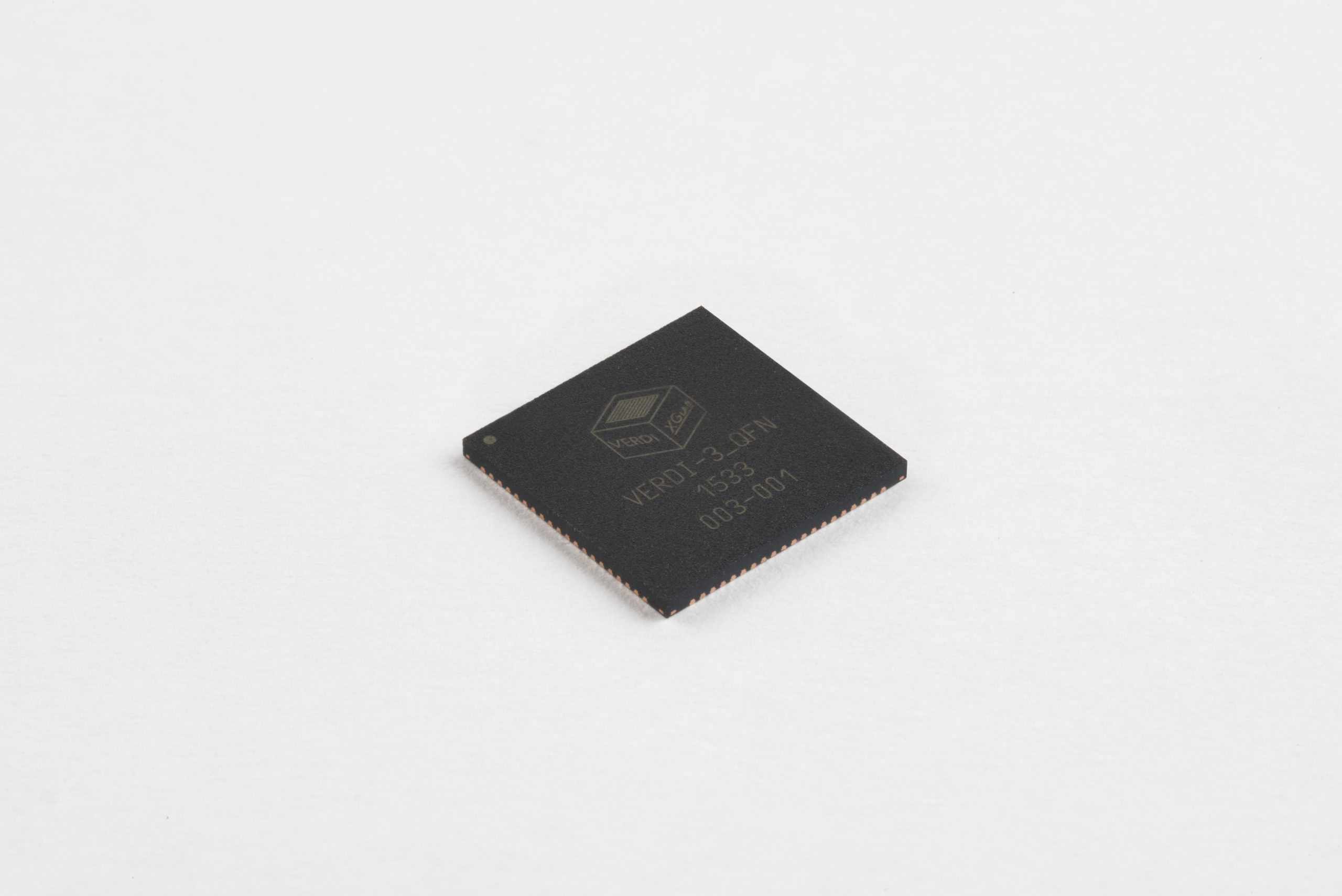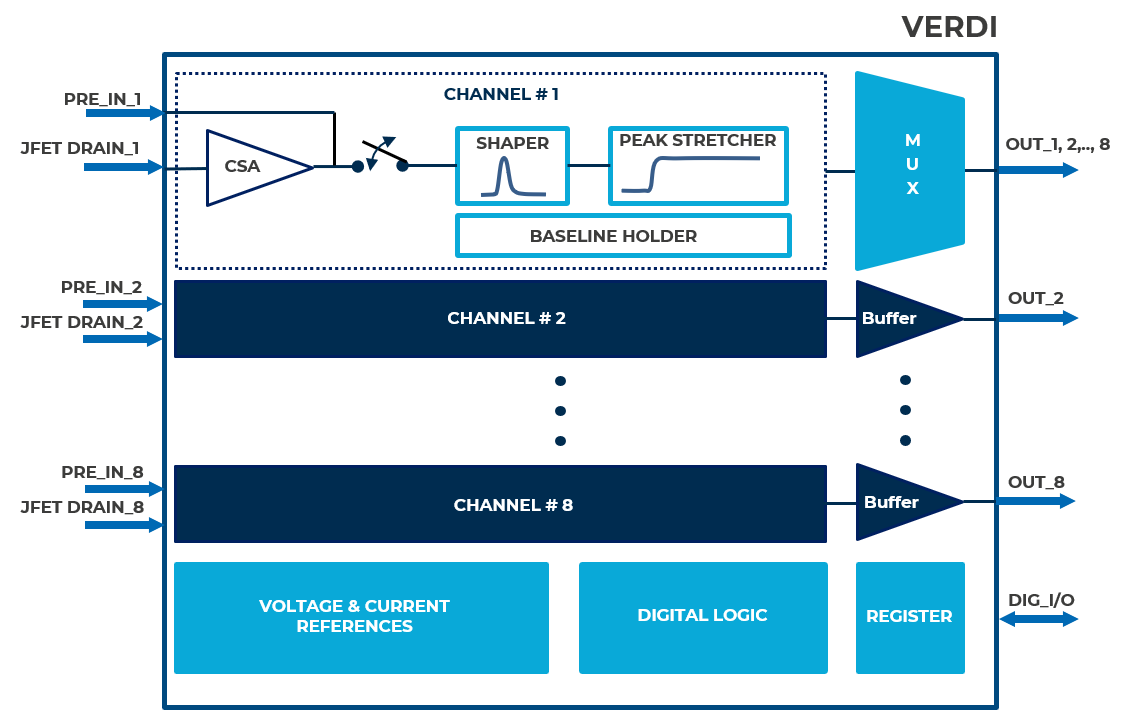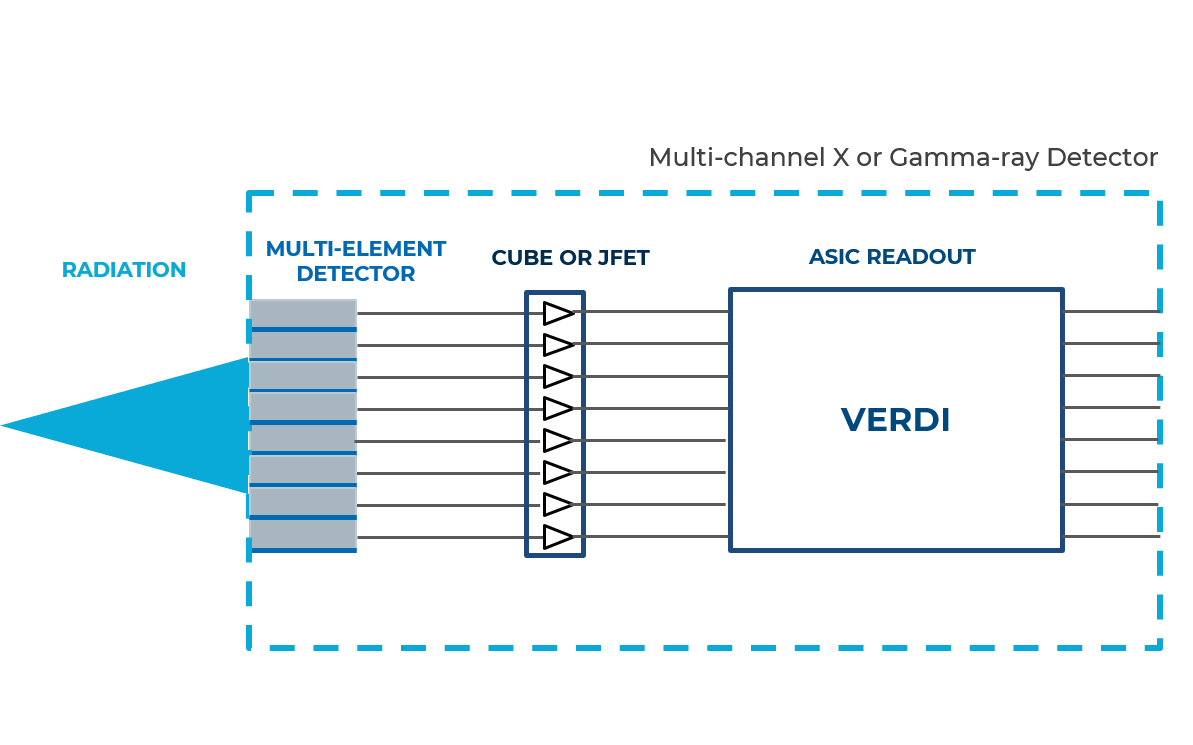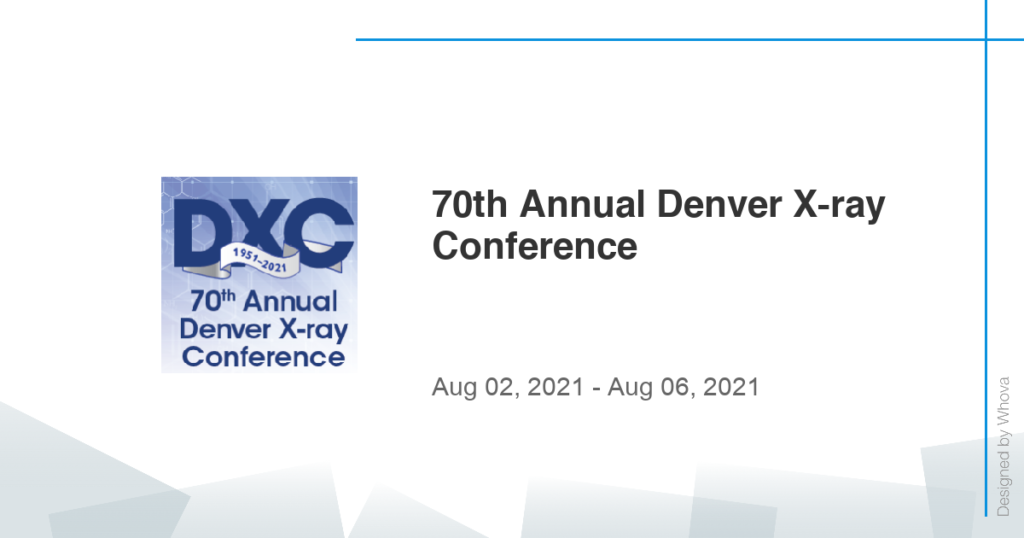VERDI - Multi-channel Analog Readout for Radiation Detectors

VERDI is a multi-channel ASIC capable of reading out different type of radiation detectors (SDD, PMT, Si (Li) etc.) with both positive and negative signal polarities. The circuit includes 8 channels, each one composed by a Charge Sensitive Amplifier (CSA), a Shaping Amplifier, a Baseline Holder, a Peak Stretcher, and an output buffer.
Main Features
- Availability: bare die, QFP120, QFN80
- Physical size: 3.5 mm x 3.5 mm x ?? mm (bare die), 28 mm x 28 mm x 4 mm (QFP120), 12 mm x 12 mm x 0.8mm (QFN80)
- Reset: pulsed or continuous (with external zero-network)
- Mode: Normal, Low-Power (multiplexed output) or shut down
- Power consumption: 170 mW in low-power mode and 3mW in shut down mode
Applications
- Front-end JFET readout for radiation detector application
- Multi-element X and Gamma-ray detectors readout
- Nitrogen-cooled Ge and Si(Li) detectors, Silicon drift detectors (SDDs), Scintillation Detectors, Photomultipliers Tubes, etc.
VERDI Schematic

VERDI where to use

VERDI Technical Data
| Parameter | Conditions | Value |
|---|---|---|
| Positive Supply Voltage, VDD | Supply Voltage | +1.7 V |
| Nevative Supply Voltage, VSS | Supply voltage | -1.7 V |
| Current | Low-power mode | 52 mA |
| CSA compatibility | polarity | e-/h+ collection |
| CSA compatibility | JFET gm | 2-45mS |
| CSA compatibility | JFET Cgs | 0.45 - 25pF |
| CSA Compatibility | Cfeedback | 0.050pF - 10pF |
| CSA compatibility | Cdetector | 0.2pF-39pF |
| CSA gain scale | Configurable by SPI | 20mV - 300mV |
| Threshold voltage for reset, THR_PRE | Internally selectable or by external partition | from -1.5V to +1.5V |
| SHAPING TIME | Configurable by SPI | 0.25us, 0.5us, 0.75us, 1.0us, 2.0us, 4.0us, 6.0us, 8.0us |
| Baseline Holder, BLH | Configurable by SPI | Not active, High side, Low side, Low and High side |
| Buffer Output | Configurable by SPI | RC waveform, Semi-Gaussian shaper, Peak stretcher waveform, GND |
Contact us
News & Events
IN LINE XRF APPLICATIONS
X-Ray Fluorescence (XRF) is a powerful analytical technique able to identify several elements in samples, eg Aluminum (Al), Chromium (Cr), steels elements and others It provides several advantages...Learn more
RADIATION FROM THE STARS
On this March Equinox, we decided to point our heads towards the sky and start to learn a bit more about what we could observe if our eyes could see X and Gamma rays We asked to Riccardo Zito,...Learn more

XGLAB Participate at DXC 2021
XGLAB is a proud sponsor of the Denver X-ray Conference DXC 2021...Learn more
